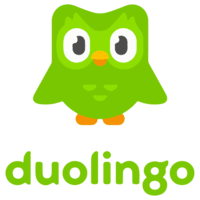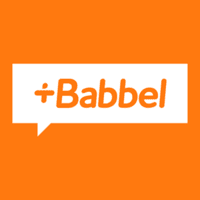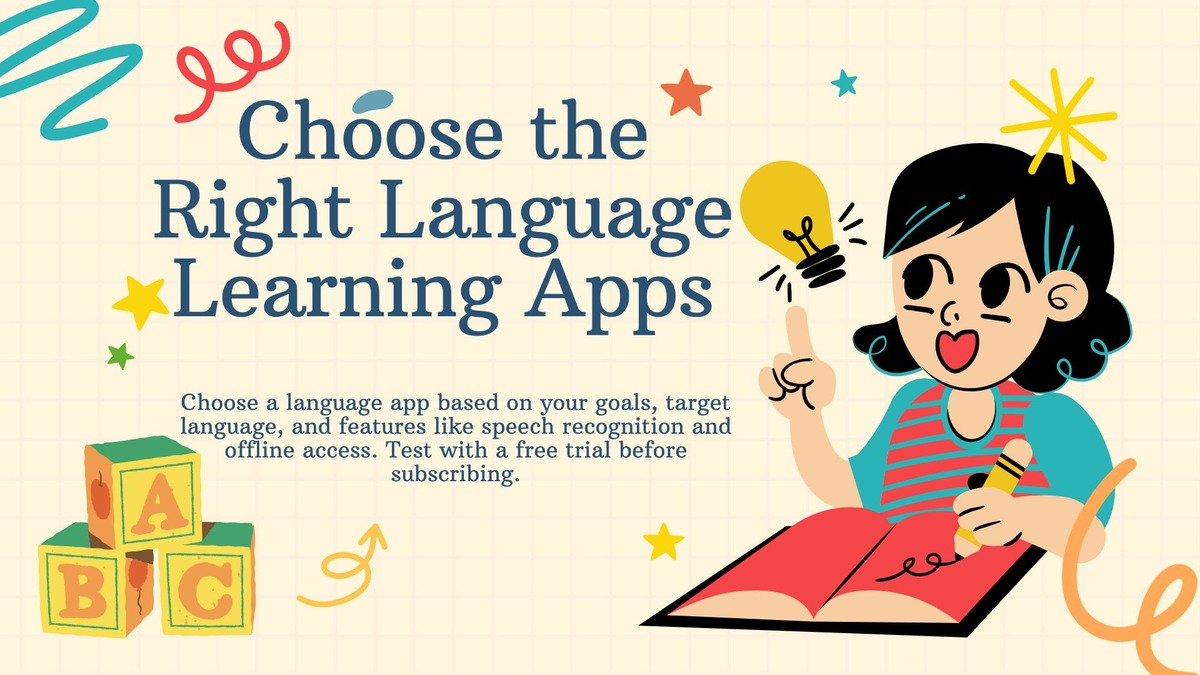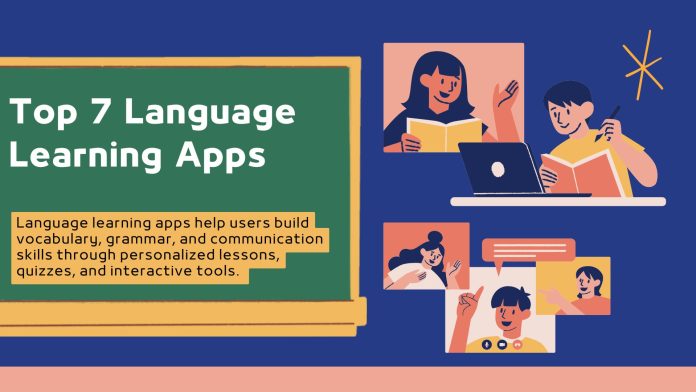The digital age enables worldwide open access to language learning through powerful program applications which make acquisition of new languages more convenient than ever. These apps supply adjustable and exciting learning opportunities to develop language skills through mobile devices and desktop interfaces. Language learning students now have improved tools for their studies because 2025 delivers AI-driven personalization together with advanced features such as speech recognition and immersive content. These applications meet the requirements of starting learners and skilled users through their wide range of functionality that suits every learning preference. This article reviews seven top language learning apps for 2025 through examination of their key features together with benefits along with special qualities.
What is Language Learning Apps and how does it works?
Language-learning applications enable users to learn new languages among their smartphones and desktop solutions through combined mobile and computer platforms. Users can access pre-organized classes on digital platforms to learn vocabulary and the platforms include sections dedicated to grammar understanding and developing capabilities in both listening skills and speech development and reading and writing practice. The application begins its sequence with objective data collection from users followed by skill evaluations and learning style collection needed to build personalized instruction. Learning advancement happens for users by integrating quiz-driven activities with flashcards and voice recording functions that also utilize gaming mechanics to create steady increases in proficiency. Tracking systems now enhance access to language learning because they combine with customizable learning adaptions which operate through daily reminders that function across different applications.
Key Features of Language Learning Apps
- Interactive Lessons – Bite-sized lessons with audio, visuals, and quizzes for vocabulary, grammar, and conversation practice.
- Speech Recognition – Helps improve pronunciation by letting users speak and get feedback in real-time.
- Personalized Learning Paths – Custom lessons based on your skill level, learning goals, and progress.
- Gamification – Points, levels, streaks, and rewards to keep learning fun and motivating.
- Offline Access – Download lessons and practice without needing the internet.
- Progress Tracking – Dashboards to monitor learning history, achievements, and daily goals.
- Multi-Language Support – Access to dozens of languages with content tailored to each one.
- Cultural Tips – Some apps offer insights into the culture and context behind the language.
- Live Tutoring or Chatbots – Option to practice with tutors or AI for real-time conversations.
Benefits of Language Learning Apps
- Convenient & Flexible – Learn anytime, anywhere at your own pace using your phone or tablet.
- Cost-Effective – Many apps offer free versions or affordable plans compared to traditional classes.
- Personalized Learning – Tailored lessons match your skill level, goals, and progress.
- Interactive & Engaging – Games, quizzes, and rewards make learning fun and help boost retention.
- Improves All Skills – Covers reading, writing, speaking, and listening through diverse content.
- Instant Feedback – Helps correct mistakes and improve pronunciation through real-time tools.
- Builds Confidence – Regular practice with supportive tools helps overcome fear of speaking.
- Tracks Progress – Keeps you motivated by showing how far you’ve come and what’s next.
- Supports Multiple Languages – Learn more than one language from a single app.
- Encourages Consistency – Daily reminders and streaks help form strong learning habits.
Here is the list of Language Learning Apps
1. Duolingo

Duolingo is a popular language learning app that offers users the ability to learn over 30 languages through interactive lessons, games, and exercises. It employs a gamified approach, where users complete lessons to earn points, level up, and maintain streaks, making the learning process engaging and motivating. Duolingo covers various language aspects, including vocabulary, grammar, listening, speaking, and reading. The app is suitable for beginners and intermediate learners, providing instant feedback to improve pronunciation and understanding. It personalizes learning by adjusting lesson difficulty based on user performance and progress, ensuring the content is always at an appropriate level. Duolingo also includes speech recognition technology for pronunciation practice, and offers offline mode for flexibility, allowing users to continue lessons without an internet connection.
Pros
- Fun and engaging
- Free version offers extensive access
- Easy to start for beginners
Cons
- Limited advanced-level content
- Can feel repetitive over time
Who Is It For?
Ideal for beginners and casual learners who want to build vocabulary and grammar basics.
Specs & Configurations
- Platforms: Android, iOS, Web
- Offline mode: Available in premium
2. Babbel

Babbel is a popular language learning app that helps users gain practical conversational skills through real-world topics like travel, food, and work. It offers courses in various languages such as Spanish, French, German, and Italian, with lessons designed to be short and manageable—typically 10 to 15 minutes—making it easy to fit into daily routines. Babbel uses interactive lessons and practice exercises to teach vocabulary, grammar, and pronunciation, reinforced by a spaced repetition system for better retention. It features speech recognition technology to improve pronunciation and adapts lessons based on the user’s skill level, ensuring a personalized experience. Users can also track their progress and engage in exercises that simulate real-life conversations for practical learning.
Pros
- Practical conversation focus
- Structured courses
- Strong grammar support
Cons
- Limited number of languages (14)
- Subscription required for full access
Who Is It For?
Perfect for learners seeking practical conversational skills and deeper understanding of grammar.
Specs & Configurations
- Platforms: Android, iOS, Web
- Offline mode: Yes
3. Rosetta Stone

Rosetta Stone is a renowned language learning app and software that teaches users new languages through an immersive approach, helping learners acquire a language naturally, similar to how they would learn their first language. It offers a variety of languages, including Spanish, French, German, Italian, Chinese, and more. The app utilizes a method called “Dynamic Immersion,” focusing on teaching vocabulary and grammar through context rather than translation, introducing new words and phrases with visual cues. Users practice speaking, listening, reading, and writing through interactive exercises, without relying on their native language, encouraging them to think directly in the target language. It also features speech recognition technology for refining pronunciation by comparing users’ speech to native speakers. Rosetta Stone adapts to the learner’s progress, offering more challenging exercises as they improve and integrates regular review sessions to enhance memory retention. Additionally, it allows users to access lessons on various devices, offering flexibility and convenience in their learning journey.
Pros
- Time-tested method
- Strong speech pronunciation tool
- Great for auditory learners
Cons
- More expensive
- Can be slow-paced
Who Is It For?
Ideal for visual and auditory learners committed to long-term study.
Specs & Configurations
- Platforms: Android, iOS, Web
- Offline mode: Yes
4. Memrise

Memrise is a language learning app designed to make learning new languages fun, engaging, and effective. It uses a combination of real-world video clips, spaced repetition, and gamified elements to help learners build vocabulary, grammar, and conversational skills. The app offers a wide variety of languages, including Spanish, French, German, Japanese, and more. Memrise works by presenting users with words and phrases, using native speaker video clips to demonstrate proper pronunciation and context. The app then reinforces learning through spaced repetition, ensuring better retention of vocabulary over time. Users are encouraged to practice speaking, listening, reading, and writing in interactive lessons, with progress tracked via points, streaks, and levels, keeping the learning process motivating. With its user-friendly interface and engaging features, Memrise is ideal for both beginners and intermediate learners looking to expand their language skills at their own pace.
Pros
- Engaging and informal
- Rich in cultural content
- Great vocabulary builder
Cons
- Less structured than others
- Limited grammar coverage
Who Is It For?
Great for travelers and learners who enjoy casual, visual-based learning.
Specs & Configurations
- Platforms: Android, iOS, Web
- Offline mode: Premium only
5. Busuu

Busuu is a popular language learning app that offers a comprehensive platform for users to learn and practice over 12 languages, including Spanish, French, German, Italian, and more. It works by providing interactive lessons that focus on speaking, listening, reading, and writing skills. The app uses a combination of personalized study plans, grammar exercises, vocabulary building, and real-world dialogues to help users effectively learn a new language. One unique feature of Busuu is its community aspect, where learners can practice their skills by engaging with native speakers through language exchanges and feedback. The app also includes speech recognition technology to help refine pronunciation, as well as personalized study recommendations based on individual progress. Busuu offers both free and premium subscriptions, with the premium version unlocking additional features such as offline access, grammar lessons, and more advanced content.
Pros
- Personalized learning path
- Community-driven corrections
- Good grammar explanations
Cons
- Limited free access
- Smaller language selection (12 languages)
Who Is It For?
Best suited for learners who value real feedback and structured paths.
Specs & Configurations
- Platforms: Android, iOS, Web
- Offline mode: Premium only
6. LingoDeer

LingoDeer is a language learning app focused on Asian languages such as Korean, Japanese, Chinese, and Vietnamese, offering structured lessons that break down language skills into manageable units. It incorporates three main components: “Learning Tips” to introduce grammar concepts, “Stories” that contextualize those concepts through dialogues and videos, and “Lesson Activities” to reinforce learning through interactive exercises. The app also features flashcards, quizzes, and offline access, allowing learners to practice at their own pace. Available on iOS, Android, and web platforms, LingoDeer offers a free trial with alphabet lessons and basic units, while a premium subscription unlocks full access, including progress tracking and cross-device synchronization.
Pros
- Rich grammar support
- Structured learning
- Great for Asian languages
Cons
- Smaller selection of languages
- Interface not as intuitive as others
Who Is It For?
Best for learners of Korean, Japanese, or Chinese.
Specs & Configurations
- Platforms: Android, iOS, Web
- Offline mode: Yes
7. Mondly

Mondly is a language learning app designed to help users learn over 30 languages through interactive and engaging lessons. It uses a combination of vocabulary, grammar, and conversational practice to teach new languages. Mondly offers daily lessons that include exercises such as speaking, listening, reading, and writing, with a focus on real-life conversation skills. The app uses speech recognition technology to improve pronunciation, and it personalizes lessons based on the learner’s progress. Additionally, Mondly offers features like chatbots for simulated conversations, a visual dictionary, and offline access to lessons. Available on both iOS and Android, Mondly provides a free version with limited content, while a premium subscription grants full access to all lessons, advanced features, and progress tracking.
Pros
- Innovative tech features
- Quick lessons
- Daily learning reminders
Cons
- Some content locked behind paywall
- Less comprehensive grammar instruction
Who Is It For?
Great for tech-savvy learners and those who want bite-sized daily learning.
Specs & Configurations
- Platforms: Android, iOS, Web
- Offline mode: Yes (Premium)
Choose the Right Language Learning Apps

Choosing the right language learning app can greatly impact how effectively and enjoyably you acquire a new language, so it’s important to consider several key factors before making a decision. First, identify your learning goals—whether you’re aiming for conversational fluency, travel basics, grammar mastery, or professional proficiency—as different apps specialize in different areas. Check the language availability to ensure the app offers your target language, especially if it’s less commonly taught. Look for features like interactive exercises, speech recognition, spaced repetition, and real-world dialogues that match your learning style. User-friendly design and intuitive navigation also enhance the learning experience, especially for beginners. Consider the app’s structure—whether it follows a step-by-step curriculum or offers flexible lesson paths—and make sure it fits into your daily routine with lesson lengths and offline access options. Reviews and ratings from current users can offer insight into how well the app performs in practice. Finally, explore free trials or basic versions before committing to a subscription, so you can test the content quality, pacing, and level of engagement to ensure it aligns with your needs.
Conclusion
Choosing the right app depends on your learning style, target language, and goals. Whether you’re after a gamified experience or structured grammar lessons, these top apps of 2025 offer something for everyone. Happy learning!
FAQs for Language Learning Apps
- What are the best language learning apps in 2025?
Some of the top apps include Duolingo, Babbel, Rosetta Stone, Memrise, Busuu, LingoDeer, and Mondly—each offering unique features tailored to different learning styles.
- Are these apps free to use?
Most apps offer free versions with basic features. To unlock full courses, speech tools, and personalized lessons, premium subscriptions are usually required.
- Which app is best for beginners?
Duolingo and Babbel are great for beginners due to their user-friendly design, structured lessons, and fun interactive exercises.
- Can I learn more than one language at a time?
Yes, apps like Duolingo, Memrise, and Mondly allow users to study multiple languages simultaneously and switch between them easily.
- Do these apps work offline?
Many apps like Rosetta Stone, Babbel, and LingoDeer offer offline mode so you can download lessons and study without internet access.
- Are these apps suitable for kids?
Yes, apps like Duolingo offer a child-friendly interface, and some have special versions or modes specifically designed for younger learners.
- Can I track my progress with these apps?
Absolutely. Most language apps include progress tracking, daily goals, streak counters, and review sessions to monitor learning over time.

